Davenham in Great Malvern then and now
Summary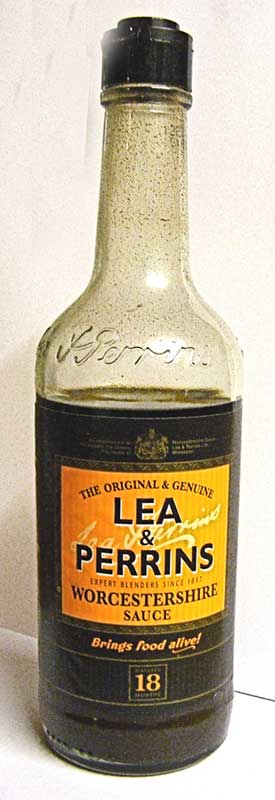
This is a history of a Victorian mansion in Graham Road,
Great Malvern named Davenham, now
used as a residential home for the elderly, and the family of philanthropist
Charles William Dyson Perrins, a member of the wealthy Lee
and Perrins Worcestershire Sauce family, who once lived there.
In addition there is a mention of the Bradshaw family who
lived in the gardener's cottage before moving to Guarlford Court.
If you wondered why Dyson Perrins Church
of England school is so named you
will find the answer below.
Contents
About Davenham
Little Davenham
The Clerkenwell Estate
Davenham Cow House
Charles William
Dyson Perrins
> The old Malvern
hospital
William Dyson Perrins
The Dixey family
The
Bradshaw family
Davenham is the name of a mansion in Graham Road, Great Malvern
in the county of Worcestershire, England - now a care home. It was built about 1860 by local builder George
McCann. George had earlier built St Mary's Church at Guarlford in 1845 to a design by Thomas
Bellamy and his name is also on the building plans of Guarlford National
School. He may also have been involved with the building of Madresfield
school and church.
At the gate adjoining the drive to Davenham there is a lodge. Click
to see photo of Davenham Lodge
Davenham mansion was enlarged in 1885 by the architect
Edmund
Wallace Elmslie, who had designed St Munghos in Albert Road, now Elmslie
House, the
Imperial Hotel and Great Malvern railway station. Further alterations were
made about 1901 by architect William Henman, who had designed the Lee and
Perrins sauce factory (ref 1).
The photo below shows the front of Davenham and the
main door, taken at an Open Day in 2012.
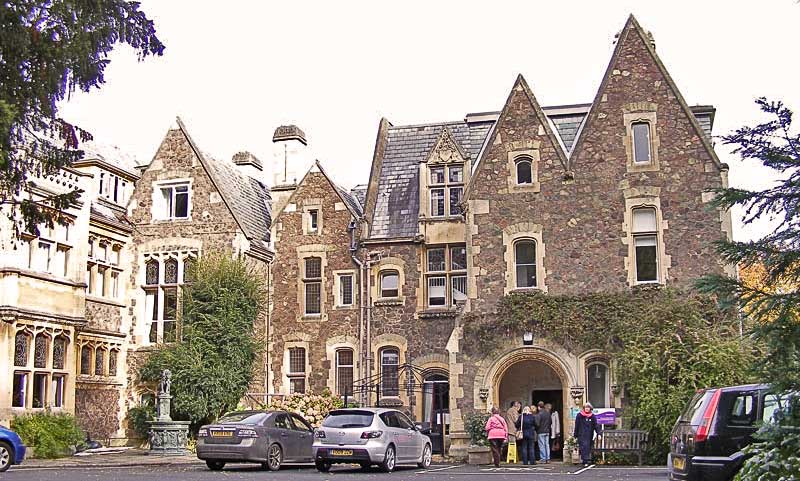
In 1871 the house was known as 'Davenham Bank'; and occupied by James and Sarah
Dyson Perrins, their three daughters and son Charles William Dyson Perrins
who inherited the house when his father died in 1887.
The Perrins family obtained their wealth from the
manufacture of Lea & Perrins Worcestershire Sauce, which was sold all over
the world.
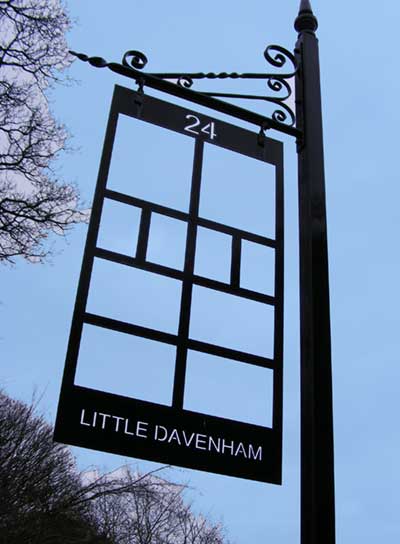
When Charles died in 1958 his second wife
Florence, known as Frieda, bequeathed Davenham to the Friends of the
Elderly, in memory of her husband; so the mansion is nowadays an
upmarket care
home. The dairy, laundry and stables were
converted into a new wing named Perrins House, opened in 1972 by Princess
Margaret and a dementia unit called Bradbury Court
was due to open
in 2012.
After Charles died, Frieda had a modern 'dower house' built on the eastern side of
the grounds which she called 'Little Davenham' approached from Moorlands
Road (see sign opposite at the top
of the drive, and photo below).
Lately, part of Little Davenham has been used for self-catering holiday
accommodation.
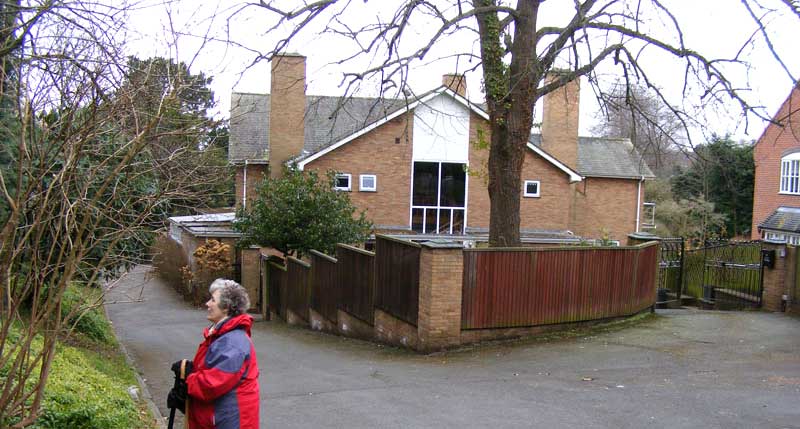
Little Davenham
A few yards east of the drive to Little Davenham, in
Moorlands Road, are iron
railings behind which
there is a cast iron Clerkenwell boundary marker.
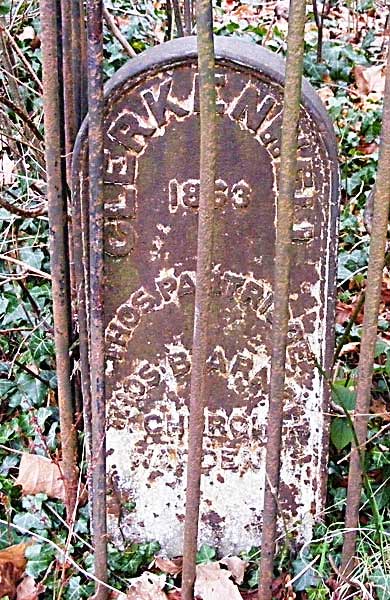
The boundary marker reads,
Clerkenwell
1863
Thos. Partridge
Thos. B Arnett
Church Wardens
The history and purpose of the Clerkenwell boundary
markers has been researched by
local resident Michael Shiner and is explained in his book (ref 2).
In summary, about 1656, land, known as
Cockshute Farm and Farmhouse, once forming part of Malvern Chase, was
acquired by Sir George Strode (1583 - 1663) and gifted as a charity
for the benefit of the poor of the Parish of St James,
Clerkenwell, in
London. The 'church' received rent and eventually began selling parcels of
land to developers. In 1853 and 1858 land was sold to the Railway and it was
probably about this time the land was sold on which Davenham was built. The
photo below shows the view from the railway bridge at the bottom of
Moorlands Road (below the boundary marker) towards
Great Malvern.
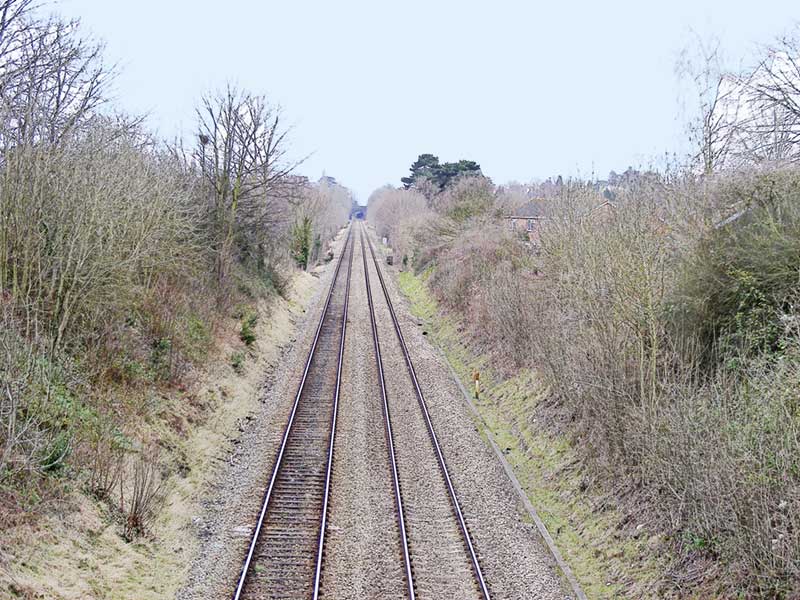
With land increasing in value due to the coming of the
water cure and the railway, the trustees of St James, Clerkenwell, must have
thought it prudent to mark the boundary of their estate. In total it is
thought there were about 30 marker posts.
Today there is no longer any connection between Malvern
and the London Parish of Clerkenwell, that is, apart from road names such as
Clerkenwell Crescent and St James Road.
By 1876 James Perrins had acquired further land below Cockshot Road
which he turned into a small home farm. A tunnel in the south east corner of
Davenham's 4 acre garden runs under Cockshot Road; the tunnel, which is now blocked
off, was once a short cut to the farm.
The photograph below (source: Bradshaw family album) shows the cow house at Davenham circa 1900.
These horned Jersey cows would have provided milk, cream and possibly butter for the
Dyson Perrins family.
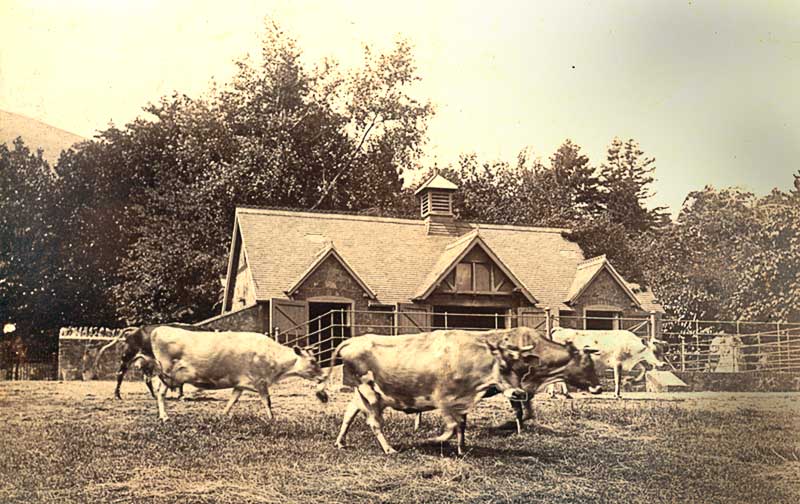
Mary Dixey relates fond memories of the 1930s and visiting
Davenham Farm in a booklet published by Malvern Museum (reference 3).
Davenham Farm was eventually sold for housing; we don't
know exactly when but probably
in the 1960s.
Charles William Dyson Perrins (1864 - 1958), who we shall
now refer to as Dyson for short, was the
grandson of William Perrins who made his fortune manufacturing Lea and Perrins
Worcestershire Sauce. Dyson was educated at Charterhouse public school and
studied law at Queens
College Oxford but did not obtain a degree. In due course he became a
director of Lea and Perrins and acquired Worcester Porcelain when it was
going through difficult times. He was a great benefactor of Malvern
supporting Malvern College, and helping to
establish the library, the local hospital and,
at the end of his life, Dyson Perrins Church of England School. Dyson laid the foundation stone of Dyson Perrins
School in 1956 but
died shortly before the school opened in 1959.
Dyson also gifted Rose Bank House and Rose Bank Gardens on the
Wells Road to the town of Great
Malvern, as an amenity, on his retirement from the Urban District Council in
1918. Rose Bank House was used by the Womens' Royal Voluntary Service (WRVS)
during WWII, but, according to reports, the house fell into decay and was
demolished in 1959.
(The 1901 and 1911 census recorded Rose Bank occupied by
George Silas Guy born about 1837 and his second wife Hannah. George's
occupation was recorded as 'managing director of an iron and steel tube
manufacturory'. George Guy died in 1912).
In 1898 Dyson acquired the Ardross
Estate and its Castle in Scotland and over time purchased further land,
building the estate up to about 4,000 acres. About 1904 he funded the Alness
Working Men's Club, known as the Perrins Centre.
In 1911 Dyson's youngest son Stuart was recorded
attending Fairfield prep school in Worcester Road, Malvern Link, which may
have been run by Edward Capel Smith. Sadly Stuart died of Pneumonia, aged only 14
years, at
Charterhouse public school
in 1913.
Dyson was a philanthropist and gave much of his fortune
to good causes, including making gifts to Holy Trinity church, Great Malvern,
where his parents worshipped. He is buried
in Great Malvern cemetery.
The full story of Dyson's influential and interesting life can be found
in John Handley's excellent biography 'The Quiet Hero' (ref 4). You will also find
Dyson listed in the Oxford Dictionary of National Biography (ref 5), and you can
either click to go
to his biography on Wikipedia or
to his story on
the Museum of Royal Worcester website.
To read about the history of Dyson Perrins and other schools in Malvern
click Malvern schools then and
now.
Once we had reason to visit the minor injuries unit of
the old Malvern Community Hospital at Lansdowne Crescent, and in the
hall was a plaque stating that:
Mr C W and Mrs Dyson Perrins built, furnished and equipped
the hospital which was opened May 29th 1911.
Another plaque showed that
between 1914 and 1919 during the Great War the building was also used as a
hospital for British sick and wounded.
An account of Red Cross Hospitals and
activities in Malvern and surrounds can be found in 'Malvern in by Great War
1915' published by Malvern Museum (ref 6).
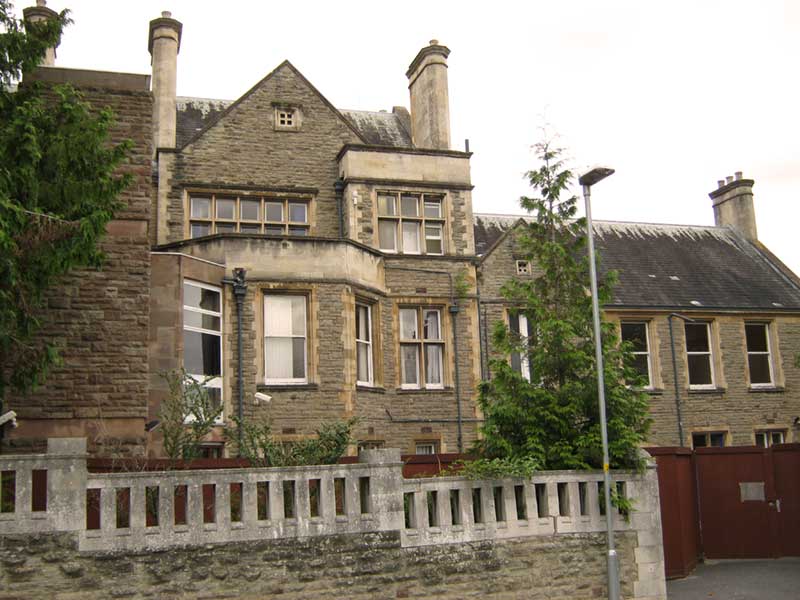
The old Lansdowne hospital
The community hospital at Lansdowne Crescent replaced the small
rural hospital in Hospital Bank which is off Newtown Road and rumoured to
have been built about 1868. The rural hospital is now a private residence known as Redwood
Cottage.
In the 1990s towns-people began to lobby for a modern
hospital and eventually work on the new hospital, on the site of the closed Seaford Court
prep school next to the fire station, began during the tenure of the Blair/Brown
Labour government. The modern Malvern
Community
Hospital in Worcester Road, opened in 2011.
Besides getting Malvern Community Hospital built, the
Blair/Brown government (1997 - 2010) improved local schools by way of better
maintenance of the buildings, and better provision of text books and
computers; the Worcester Royal Hospital was built replacing the Victorian
building in Castle Street; seemingly turning around years of underfunding by the
previous Thatcher administration.
The redundant hospital at Lansdown Crescent was offered
for sale circa 2011 as a development opportunity. An application to get the
property designated a listed building was refused, and in 2015 plans were
submitted to demolish Dyson's hospital in order to build a private care home
for the elderly. Finally in December 2019 the old Malvern hospital was
demolished.
Note: at the time of
writing, the minor injuries unit at the new hospital was open between 9:00
am and 9:00 pm seven days a week, but the X-Ray unit was only open on
weekdays till 4:30 pm. Outside
those times and at weekends you might need to go to A&E
at the Worcester Royal Hospital for an X ray.
Solicitor, William Dyson Perrins was a cousin of Charles
William Dyson Perrins. He was born in Melbourne, Australia in 1866, the son
of Thomas Henry Perrins.
In 1911 William's wife Kate (1864-1941), maiden name
Collett, was living at
Malvernbury in Abbey Road with their two children, Meredith Dyson Perrins and
Cynthia Perrins, a cook, a child's nurse and three housemaids. Next door at
Chesfield lived retired schoolmaster Francis Alfred Hooper aged 75 born Upton Warren, while on the other side, at Ashfield Lodge, lived
coachman George J Kennett and a groom. At Ashfield next door was living Jane
Charlotte Godson, widow of an MP with her daughter Ruth Tennyson D'Eyncourt,
married to a relative of the poet Tennyson, a
grand-daughter, a nurse and seven servants!
William Dyson Perrins was Chairman of the Malvern
Hospital Committee and cooperated with the Red Cross to provide beds for
soldiers injured in the Great War; he died at Davenham in 1940. His wife
Kate assisted Edith Blanche Hollins with the organisation of 'comforts' for the
troops (see below).
Charles' sister, Ellen Mary Perrins (1861-1927) married in
1885 medical practitioner Harry Edward Dixey (1863-1927) and the couple lived
for many years at Woodgate in Albert Road North. Coincidentally the historian Daphne Drake
was living at Woodgate in the 1970s when she wrote her book 'The Story of
Malvern Link Worcestershire'.
Dr Harry Edward Dixey graduated from Aberdeen. He was
house surgeon at Preston Royal Infirmary and then practised at Droitwich and
Malvern. He was active in town affairs, becoming an Alderman of the Worcestershire County Council, Deputy
Lieutenant, and a Justice of the Peace. He was appointed High Sheriff of
Worcestershire in 1921.
During WWI he was a commissioned Surgeon Captain in
the 8th Worcester Volunteer Regiment. The London Gazette reported:
Worcestershire Medical Volunteer Corps. Medical
Officer and temp Capt Harry Edward Dixey, from 2nd Bn Worcestershire Vol
Regt, to be temp apt, with precedence from 21st Feb 1917.
Dr Harry Dixey was also chairman of the King Edward VII
Memorial TB Sanatorium at Knightwick in Worcestershire, which had been
opened by Earl Beauchamp. We perhaps forget that before vaccination and
screening was introduced in the 1950s Tuberculosis was a killer disease
exposing significant numbers of the population of the UK to a lingering
death.
Dr Harry Dixey, who became chairman of the West
Worcestershire Conservative Association, was knighted in 1925, two year before his
death; the London Gazette reported:
Harry Edward Dixey, Esq MD, JP, DL Chairman and
Honorary Secretary of the Bewdley and West Worcestershire Unionist
Association for 25 years. For political and public services.
Sir Harry Dixey and Ellen Mary Perrins had four children,
-
John Crosbie Dixey
-
Evelyn Hilda Dixey
-
Kenneth Hugh Dixey
-
Phyllis Isabel Dixey
Dr John Crosbie Dixey (1889-1962)) was appointed captain and
adjutant with the 2nd Ammunition Brigade during WWI which was probably a
Worcestershire component of the Royal Field Artillery. In 1917 he married
Helen Margaret Holmes the daughter of Cambridge educated clergyman Cyril
Tidswell Holmes and grand-daughter of judge
Sir Rupert Kettle. In later life Revd CT Holmes was a curate of the Priory
Church, Great Malvern (1908-9), and chaplain of the Abbey School, Malvern
Wells (1913-29); he died May 31, 1931,
aged 79. Physician Dr John Crosbie Dixey was elected Mayor of Barnstaple in
1925 when he was the senior partner in the firm of Dixey, Gompertz and
Leavy.
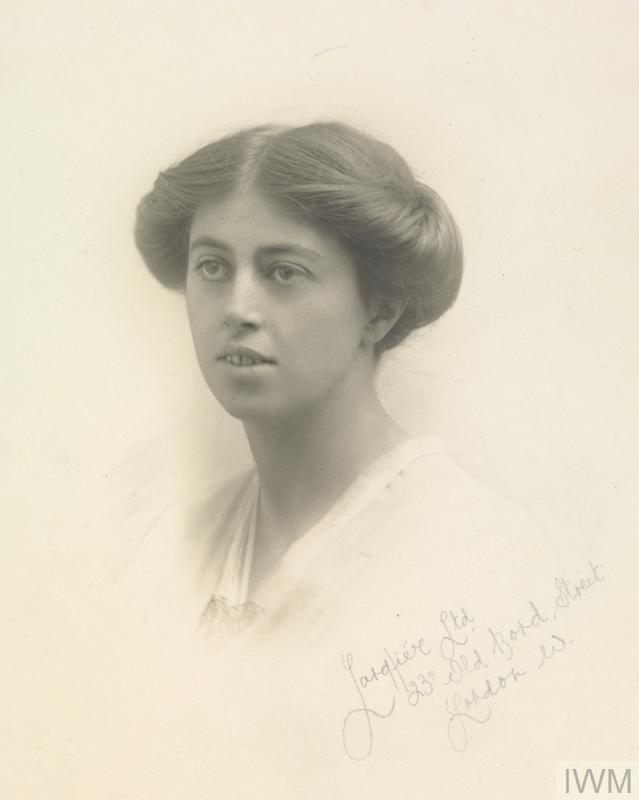 The London Gazette recorded that towards the end of WWI
Evelyn was appointed Red Cross Quartermaster at 'Malvern Auxiliary Hospital'.
This role probably covered not only the hospital at Lansdowne Crescent but a
group of large houses where wounded soldiers were sent to convalesce. The London Gazette recorded that towards the end of WWI
Evelyn was appointed Red Cross Quartermaster at 'Malvern Auxiliary Hospital'.
This role probably covered not only the hospital at Lansdowne Crescent but a
group of large houses where wounded soldiers were sent to convalesce.
On 23rd October 1918 the Times newspaper reported that
Evelyn had been awarded the MBE.
Photo right: Evelyn Hilda Dixey MBE, copyright Imperial
War Museum © IWM (WWC D8-6-933)
(Another recipient of an award was widow Edith Blanche
Hollins of Abbey Road. The London Gazette reported on 26th March 1920 that
Edith had been awarded the OBE for her work as Superintendant of the Red Cross Work
Depot for Soldiers Comforts, based at the Exchange on the corner of Graham
Road).
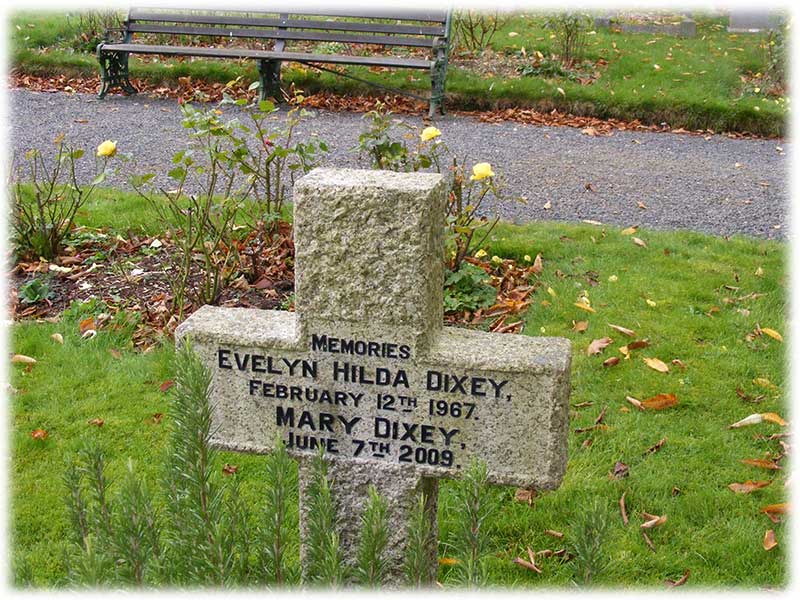 After the death of her parents, Evelyn
Dixey and her daughter Mary
lived at 'Dawn', 9 St James Road, Malvern, next door to Davenham until
Evelyn's death in 1967. After the death of her parents, Evelyn
Dixey and her daughter Mary
lived at 'Dawn', 9 St James Road, Malvern, next door to Davenham until
Evelyn's death in 1967.
Evelyn is buried in the peaceful cemetery at Malvern
Wells. See photo of headstone opposite.
Carol Rosemary Dixey known as 'Mary' was educated in Malvern at Lawnside
School and worked for many years as a teacher at nearby North
Malvern Church of England Primary School.
Accounts of life at North Malvern C of E School can
be found in Gill Holt's publication about Malvern Schools (ref 7). This
includes memories of Mary Dixey who went to teach at North Malvern infants
in 1952; can you imagine, the school then had only gas lighting - and the loos were outside!
When nearby Cowleigh School was destroyed in a fire
in 1989, a new school was built to take the children of both schools, as by
then North Malvern School was in need of modernisation. The new school is
named Northleigh Church of England Primary School located in St Peter's
Road. The redundant lower North Malvern School building was converted into
flats which were appropriately named 'Dixey Court'.
Besides being a well loved teacher, Mary Dixey was
also a stalwart of the Priory church and a few days after her death in 2009
a tribute was published in the Priory magazine, which she had edited from
1964 to 2001, and the Malvern Gazette (ref 8). Mary had started the Priory bookshop and was co-author of an excellent history of
Lawnside school.
Mary is buried with her mother in Malvern Wells
cemetery; when we visited the inscription on the headstone was almost hidden
by a Rosemary bush, the herb of remembrance which bears her name.
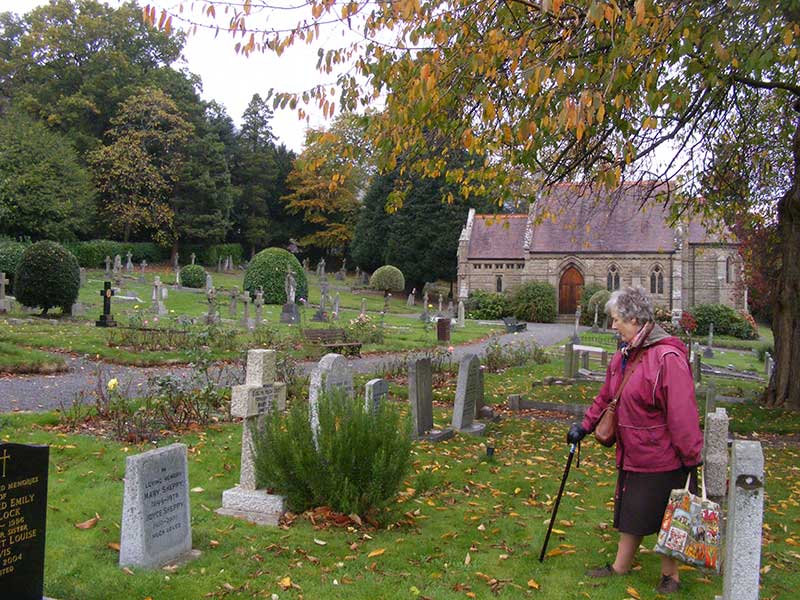
Malvern Wells Cemetery
We know nothing about Kenneth Dixey except that he married and directories
record him living at Wychwood in Pickersleigh Road.
Phyllis married in 1917 Pierce Francis O'Brien
(1883-1961). At the outbreak of WWI Pierce had joined King Edward's Horse as
a Trooper, but broke his left leg and damaged his knee when he fell from a
horse during manouvres on Hounslow Heath and was discharged. His widowed
mother was then living with a sister at Ryall Grove near Upton upon Severn,
so it is possible he met Phylis at Malvern during his
convalescence.
Pierce's mother Charlotte Hautenville Stephens, born in
Ireland about 1858, was the daughter of merchant George Alexander Stephens and
Selina Bell of Blackhall Place, Dublin.
Before WWI Pierce was a secretary with the Buenos Aires
and Pacific Railway and the couple lived in Argentina for a time after the war. Later they lived in Paignton, Devon.
 Very sadly their only son
Michael Pierce O'Brien of the
Royal Navy Volunteer Reserve was killed on 15th June
1944 aged only 20 years. He was a Sub-Lieutenant on the frigate HMS
Blackwood (K313) which was on patrol in the channel protecting ships
following the D Day landings when it was hit by a torpedo fired from U-764.
Michael was born in Buenos Aires in 1924 and he had been a pupil at
West Downs
School Winchester. His name is recorded both on the Plymouth Naval
Memorial, and the war memorial at Lyndhurst in Hampshire. Very sadly their only son
Michael Pierce O'Brien of the
Royal Navy Volunteer Reserve was killed on 15th June
1944 aged only 20 years. He was a Sub-Lieutenant on the frigate HMS
Blackwood (K313) which was on patrol in the channel protecting ships
following the D Day landings when it was hit by a torpedo fired from U-764.
Michael was born in Buenos Aires in 1924 and he had been a pupil at
West Downs
School Winchester. His name is recorded both on the Plymouth Naval
Memorial, and the war memorial at Lyndhurst in Hampshire.
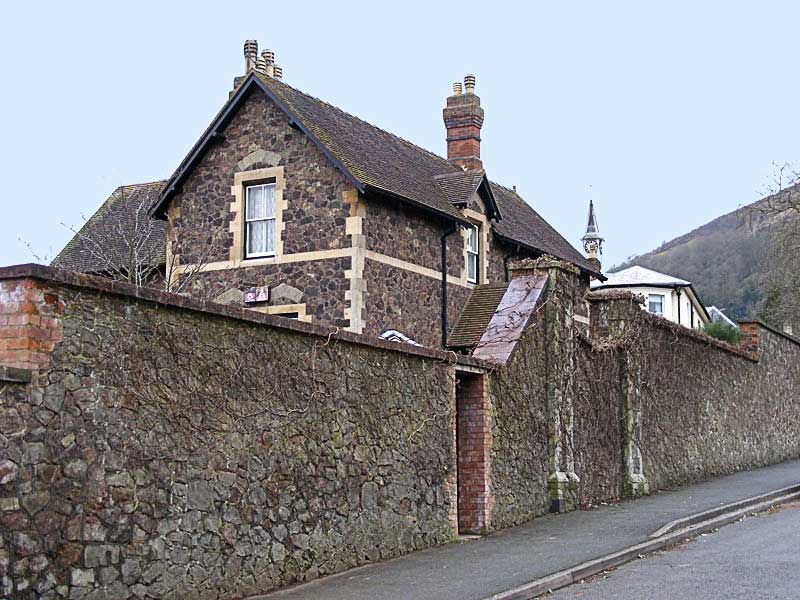 The
1891 census records Absalom Bradshaw (1849 - 1932) and his family
living within the grounds of Davenham at the gardener's cottage. The cottage still exists, see photo of the cottage on the right,
which is now named 'Ivanhoe'. The
1891 census records Absalom Bradshaw (1849 - 1932) and his family
living within the grounds of Davenham at the gardener's cottage. The cottage still exists, see photo of the cottage on the right,
which is now named 'Ivanhoe'.
(There were once glass houses below the gardener's cottage but these have been
replaced by modern bungalows which are hidden from Link Common behind the
stone wall.)
Absalom had brought his family to Malvern from
Buckinghamshire where he had been employed as a garden designer at Waddesdon
Manor owned by the Rothschild family. Perhaps it was no coincidence in
this respect that after James Dyson Perrins died in 1887 his widow, Frances,
married second in 1897 Revd Thomas John Williams, Rector of Waddesdon in
Buckinghamshire.
Waddesdon was regarded as having
one of the finest Victorian gardens in Britain. In Malvern, Absalom put his
skills to use planning and laying out Davenham's garden.
The Bradshaw family prospered and in 1898 Absalom moved to
Guarlford Court Farm, and his son 'Abby' delivered milk locally by horse and cart.
See photo below from the Guarlford History Group's archive; the photo can
also be seen on page 31 of their second book, The Guarlford
Scene (ref 9).
The photo was taken near the railway bridge at the bottom
of Moorlands Road and just above the horse's ears can be seen the clock tower
at Davenham, which still exists, though now painted white. The gardener's
cottage where the family had lived can be clearly seen behind the milk churn
on the cart.
(At the bottom of Moorlands Road there was a gas-works or
depot which was demolished in the 1990s, or thereabouts, and
replaced by a small group of houses).
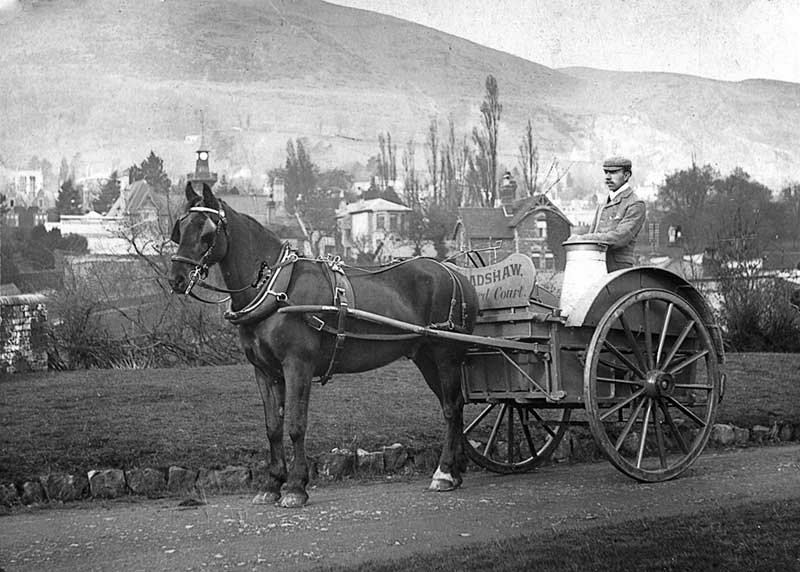
Later, Absalom's grand-daughter Joan
Bradshaw, a keen horsewoman and
historian, started Grange Farm Nursery at Guarlford (see photo of the
nursery below).
In
the days before computers Joan often visited the Worcester Records Office to
conduct research - she was an invaluable
source of information for the Guarlford History Group's first local history book:
'The
Guarlford Story' (ref 10).
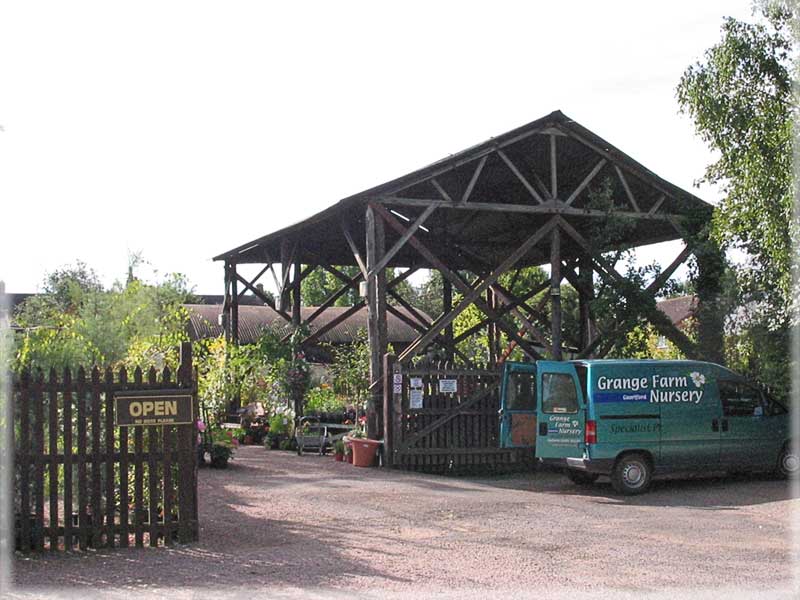
Grange Farm Nursery
References
- A brief history of Davenham and Perrins house and gardens, compiled
by Mrs B Cooke (Friends of the Elderly Support Group).
- Shiner Michael, Boundary Markers of the Clerkenwell Estate in Great
Malvern, Worcestershire, 2nd edition, printed by Aspect Design 2012.
- Gill Holt, Malvern Voices, Childhood, an oral history of the 20th
century, published by Malvern Museum 2001.
- Handley John, The Quiet Hero, the story of CW Dyson Perrins (1864 -
1958), ISBN 978-1-905795-67-3, printed by Aspect Design Malvern 2010.
- Oxford Dictionary of National Biography
- Malvern in the Great War 1915, published by Malvern Museum 2015.
- Gill Holt, Malvern Voices, Schools, an oral history, published by
Malvern Museum 2002.
- Tribute paid to Priory stalwart, Malvern Gazette, 11th June 2009
- The Guarlford Scene, published by the Guarlford History Group 2008
- The Guarlford Story, published by the Guarlford History Group 2005

Back to top
Please email suggestions for
corrections or additions to this page to the webmaster
|

